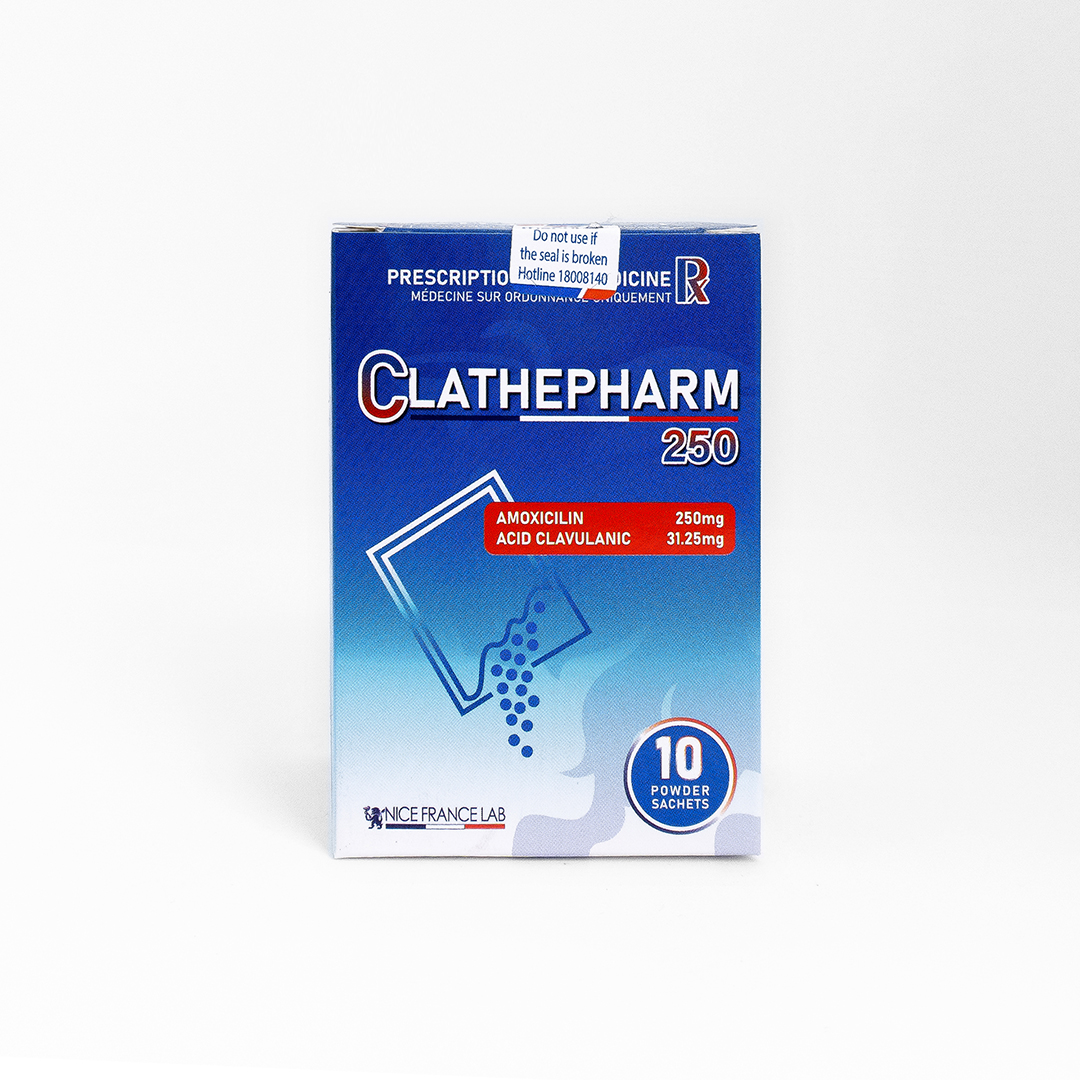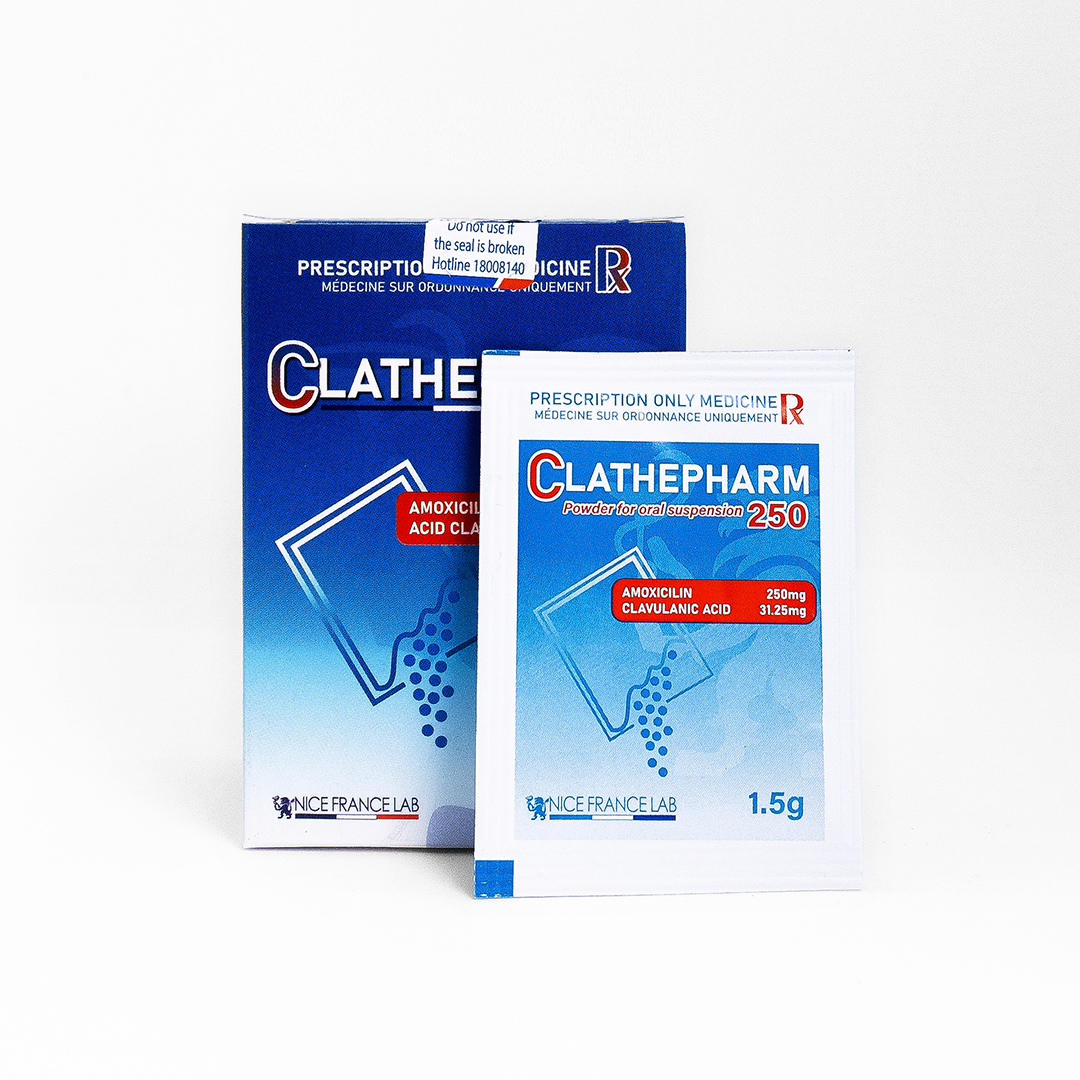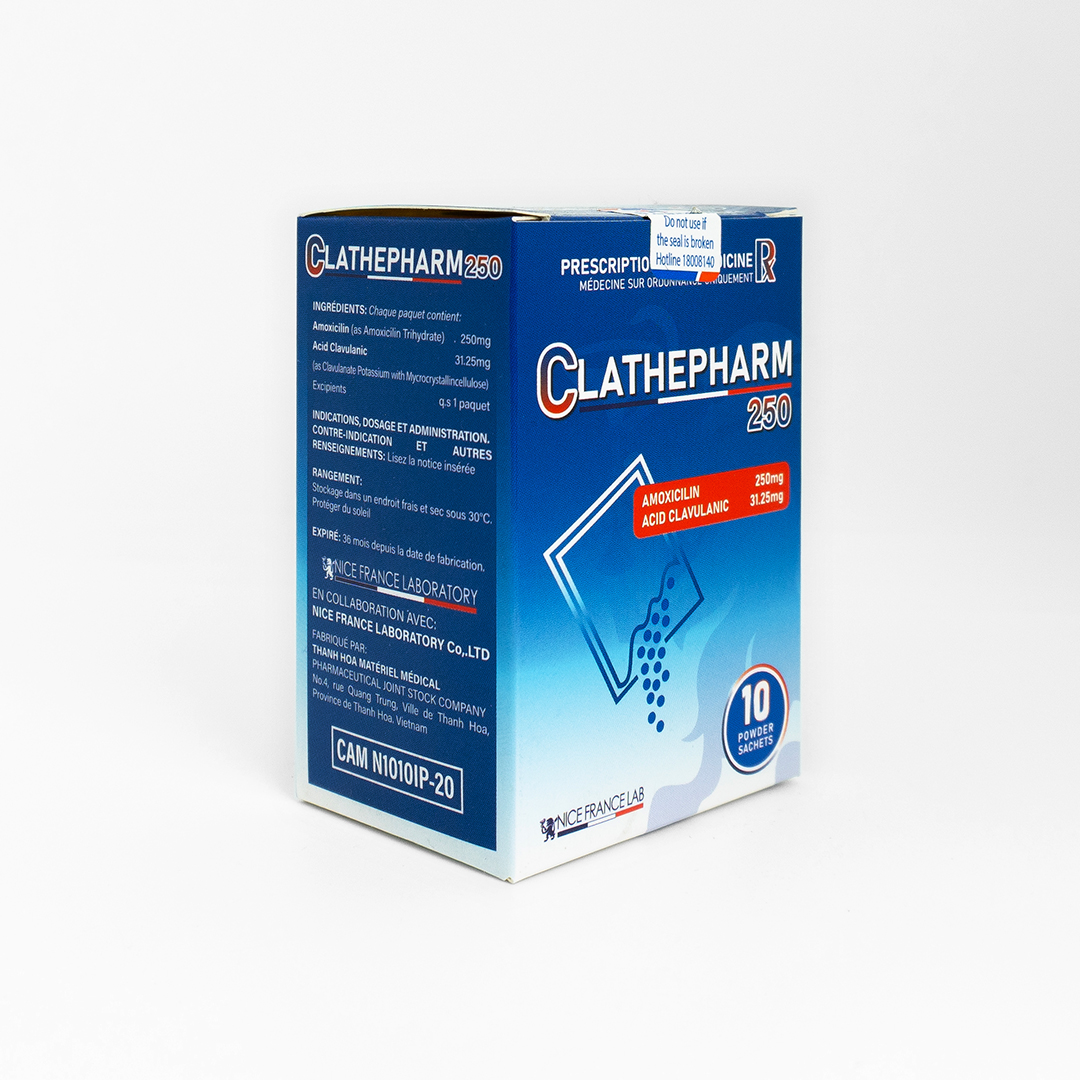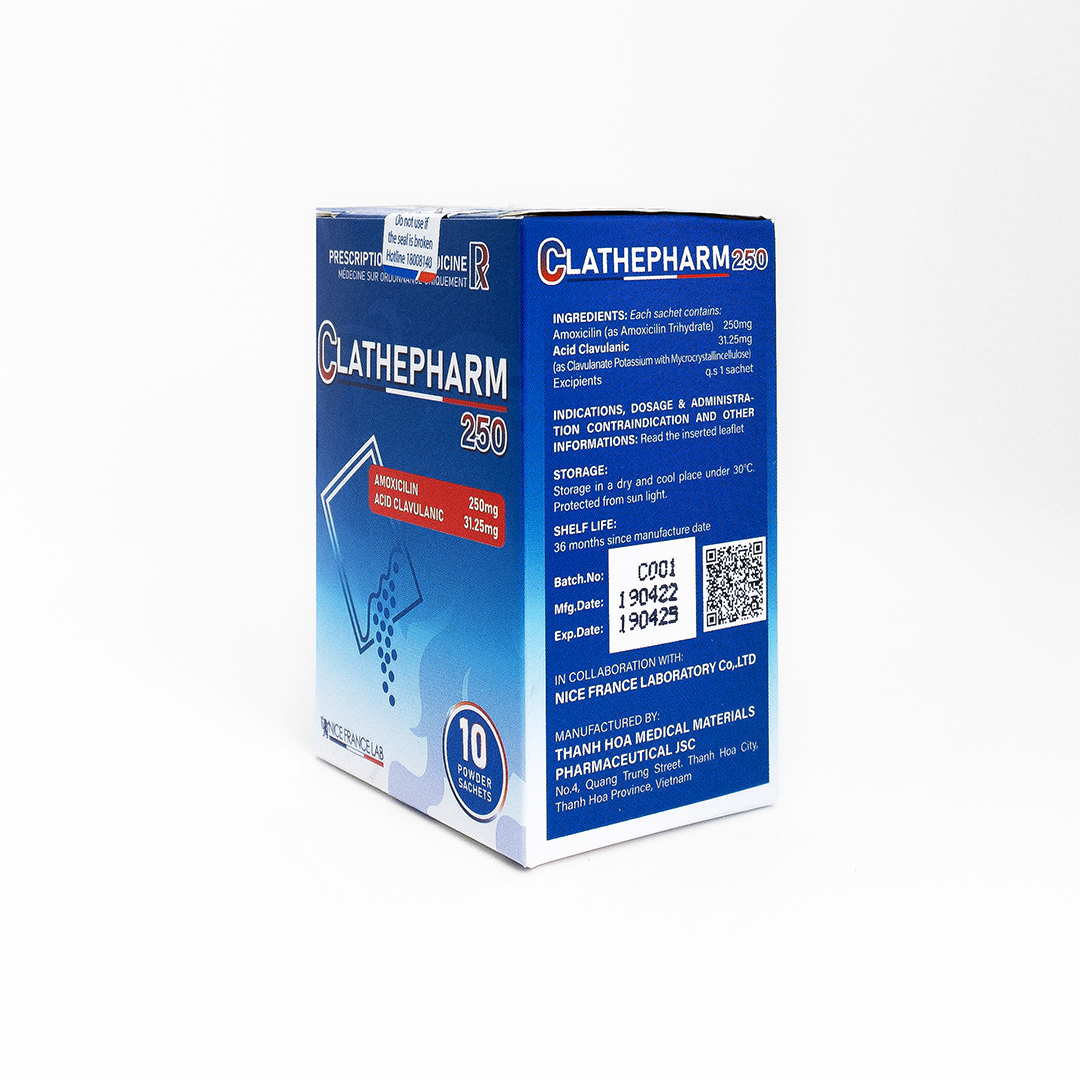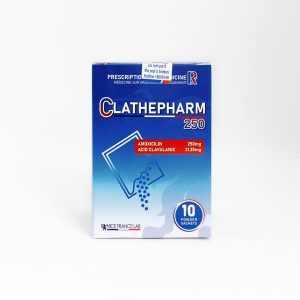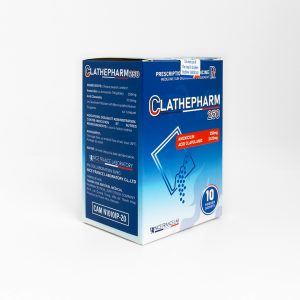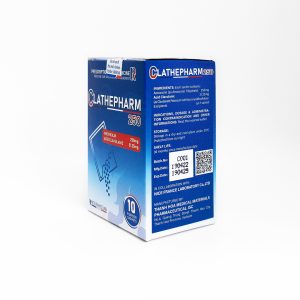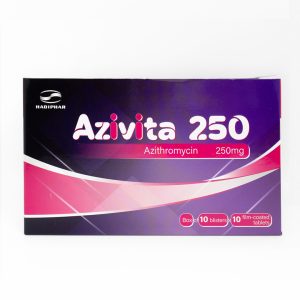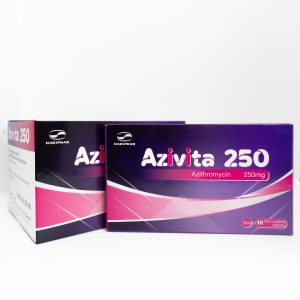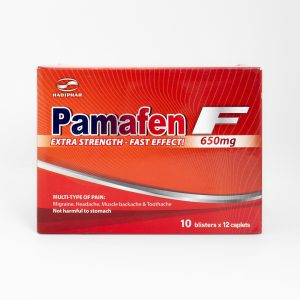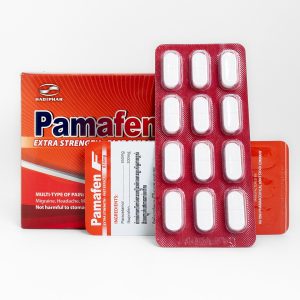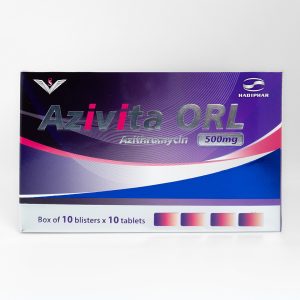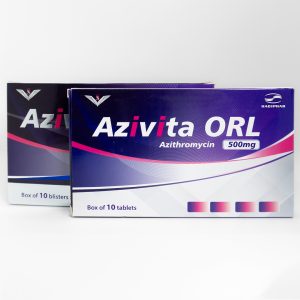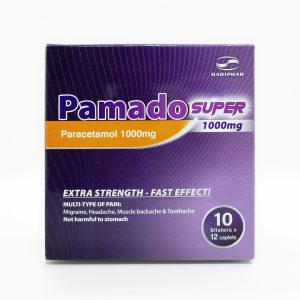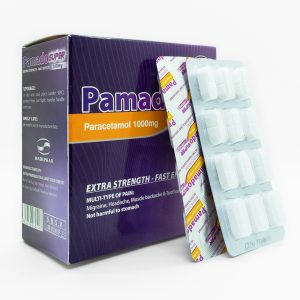Indication:
Treatment of otitis media, tonsillitis, pharyngitis, laryngitis, bronchitis, sinusitis, and pneumonia. It is also used to treat urinary tract infections, skin infections, and gonorrhea.
Contraindication:
- People with hypersensitivity to the components of the drug.
- Penicillin allergy.
- Cross allergy to cephalosporins.
- Infectious mononucleosis or lymphoid leukemia.
Dosage and Administration:
The usual dose is 250 mg – 500 mg (based on amoxicillin), every 8 hours.
– Children up to 10 years old can be given a dose of 125-250 mg, every 8 hours.
– Children under 20 kg usually use a dose of 20-40 mg/kg body weight/day.
Higher doses, taken as a single dose or in short bursts, are used in certain conditions:
– Dose of 3 g, repeated every 8 hours to treat a periodontal abscess or repeated after 10-12 hours to treat acute uncomplicated urinary tract infections.
– For the prevention of endocarditis in susceptible individuals, a single dose of 3 g should be given 1 hour before procedures such as tooth extraction.
– Use a high-dose regimen of 3 g amoxicillin twice a day for patients with severe or recurrent respiratory infections.
– If necessary, children 3 – 10 years old with otitis media can be given 750 mg/time, twice daily, for 2 days
Overdose:
Symptoms of overdose may include abdominal pain, vomiting, diarrhea, rash, hyperactivity, drowsiness. If the victim is comatose or unable to breathe, call 911 immediately.
Drug interactions:
Probenecid: Probenecid reduces the renal tubular secretion of Amoxicillin. Concomitant use of Probenecid with Amoxicillin and Clavulanic acid may increase blood levels of Amoxicillin. Concomitant use is not recommended.
– Oral anticoagulants: Concomitant use of oral anticoagulants with Amoxicillin and Clavulanic acid may cause abnormal prolongation of Prothrombin time. The dosage of oral anticoagulants should be adjusted.
Amoxicillin can lead to a false-positive reaction in a urine glucose test
Undesirable Effects:
Diarrhea, stomach ache, vomiting, skin rash, itching, hives, trouble breathing or swallowing, wheezing, itching and vaginal discharge, yellowing of the skin or eyes. Amoxicillin and Clavulanic acid can cause other side effects. Call your doctor if you have any unusual problems while taking the medicine
PREGNANCY AND BREAST-FEEDING
If you are pregnant or breastfeeding, think you may be pregnant, or are planning to have a baby, ask your doctor or pharmacist for advice before taking this medicine.
DRIVING AND USING MACHINES
Amoxicillin can have side effects and the symptoms (such as allergic reactions, dizziness, and convulsions) may make you unfit to drive.
Do not drive or operate machinery unless you are feeling well.
PHARMACODYNAMIC PROPERTIES
Amoxicillin
Amoxicillin is an aminopenicillin antibiotic with a broad spectrum of antibacterial activity.
Clavulanic
Clavulanic acid is a broad-spectrum antibiotic commonly used in combination with Amoxicillin.
PHARMACOKINETIC PROPERTIES
Amoxicillin
– Absorb: Amoxicillin is stable in acidic gastric juice. Absorption is unaffected by food and is more rapidly and completely absorbed from the gastrointestinal tract than ampicillin.
– Distribution: Amoxicillin distributes rapidly into most body fluids, except brain tissue and cerebrospinal fluid, but when meninges are inflamed, amoxicillin diffuses readily. After taking a dose of 250mg of amoxicillin 1-2 hours, the concentration of amoxicillin in the blood reached about 4-5mcg/ml, when taking 500mg, the concentration of amoxicillin reached 8-10mcg/ml.
– Elimination: Approximately 60% of an oral dose of amoxicillin is excreted unchanged in the urine within 6-8 hours. The half-life of amoxicillin is approximate- ly 1 hour, prolonged in neonates and the elderly. In patients with renal impairment, the half-life of amoxicillin is approximately 7-20 hours.
Clavulanic
Clavulanate kali is readily absorbed orally. The maximum concentration of the drug in the serum is reached 1-2 hours after taking the drug. At a dose of 250 mg (or 500 mg), there is approximately 3 mcg/mL of clavulanic acid in serum. After 1 hour of oral administration of 5 mg/kg of clavulanic acid, there was an average of 3.0 mcg/mL of clavulanic acid in serum.
Absorption of the drug is not affected by food and is best taken immediately before a meal.
The oral bioavailability of clavulanic acid is 75%.
Approximately 30-40% of clavulanic acid is excreted in the urine as an active form.
Probenecid does not affect the elimination of clavulanic acid
STORAGE:
Storage in a dry and cool place under 30°C.
Protected from sunlight.
SHELF LIFE:
36 months since manufacture date.
